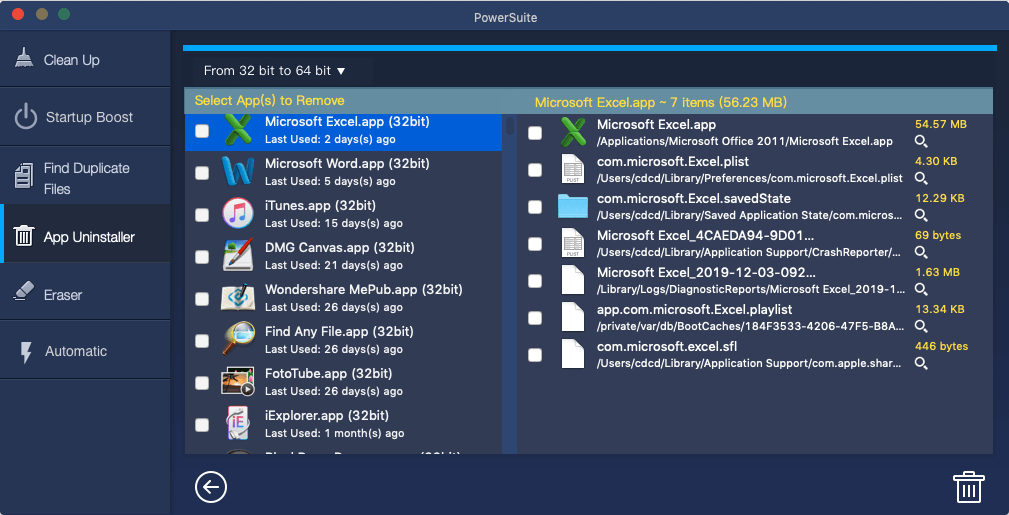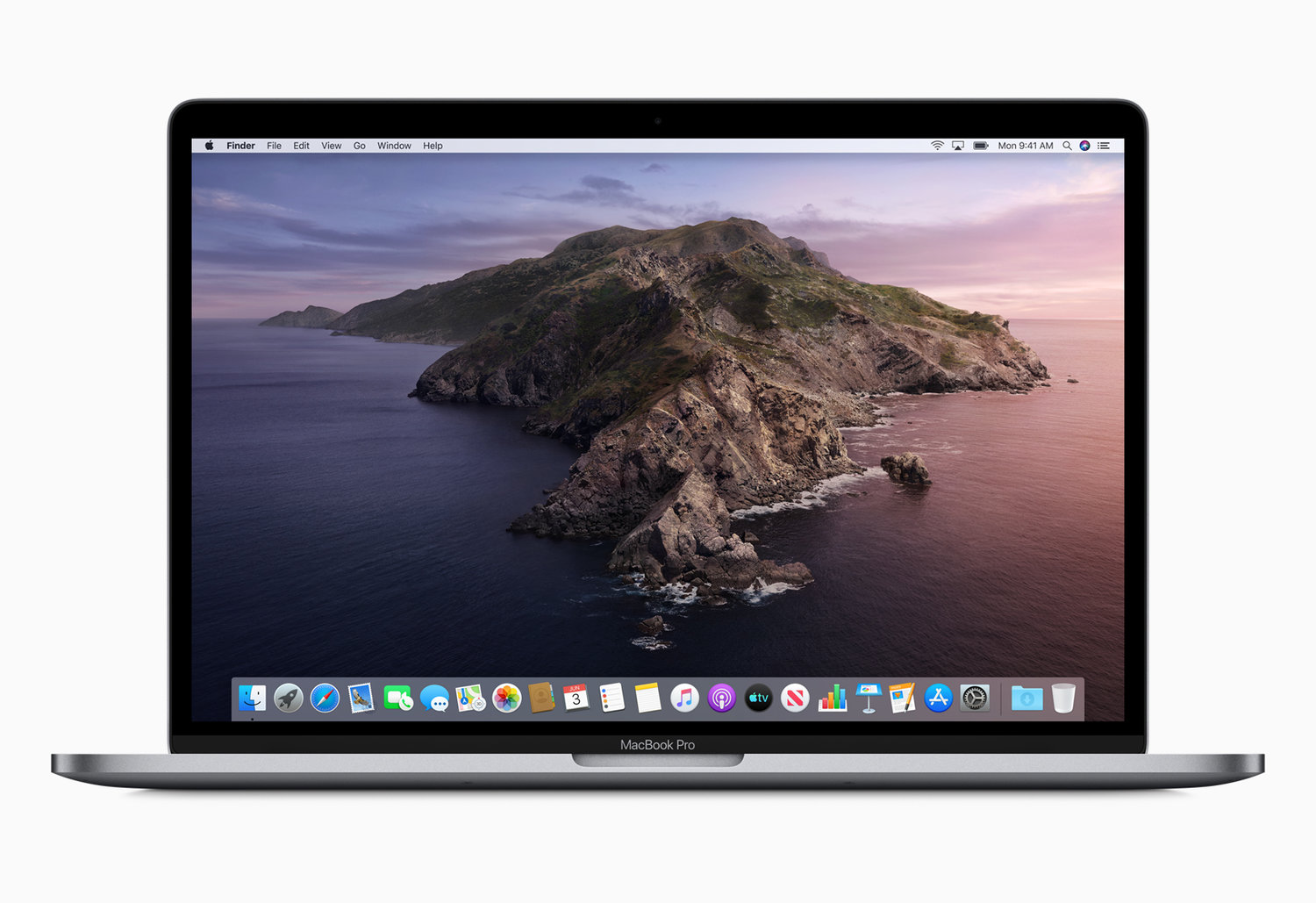To tell if you are running the 32-bit or 64-bit kernel (which matters for some device drivers), launch System Profilerand click on the Softwareheading in the Contentssection. The line 64-bit Kernel and Extensionswill say Yesif you are running the 64. A 64-bit EFI firmware was not introduced until the MacPro3,1, earlier models can only operate as 32-bit despite having 64-bit Xeon processors, however this only applies to the EFI side of the System, as the Mac boots everything else in BIOS Compatibility mode, and operating systems can take advantage of full 64 bit support. As your Macbook Pro is over 5 years old I would suggest 32 bit, although if you are happy to try it, try the 64 bit first just for fun. I will not harm the computer and it may work.
You’ve probably noticed that there are a few versions of REAPER on the download page. 32-bit or 64-bit. This is a big source of confusion for new users.
I heard that 64-bits sounds better or something. LOL
OK, the first thing to understand is that this has nothing to do with how REAPER sounds. You see these numbers used a lot with digital audio, for the operating system, file types, program coding, and mixing bit-depth. In this particular case it makes no difference to the sound quality.
Which one should you use?
If you run a 32-bit operating system, such as Windows XP, your choice is simple. 32-bit. [editor’s note – XP is 11 years old and was officially non-supported in 2009. UPGRADE NOW!]
Windows 7 is available in 32 or 64 bit (64 is recommended) versions, and OSX 10.7 Lion is 64-bit. With a 64-bit operating system you can use either REAPER 32-bit or 64-bit.
I still don’t get it
The real difference is a matter of two factors.
- How much RAM do you need?
- Are all your plugins 64-bit?

RAM
With the 32-bit version of REAPER running on a 64-bit system, there is a limit to how much RAM can be used at once. You will see a warning when you exceed 1800 MB, stability will be very questionable past that even if your computer has 4GB or more. The 32-bit version doesn’t seem like a good choice now.
The 64-bit version of REAPER running on a 64-bit system has access to every last bit of available RAM in the system. 64-bit is generally the better option, but maybe not, see the next point.
The Bridge
This part is all down to how your plugins are coded. When you run the 64-bit version and not all your plugins are coded in 64-bits, you have to deal with the bridge. The bridge allows you to run 32-bit plugins in the 64-bit environment.
The issue with the bridge is that those 32-bit plugins are now a separate program and often get hidden by the main REAPER window instead of floating on top. Also your key commands like starting/stopping playback don’t work while these floating windows are active. This takes some getting used to and if you have a lot of 32-bit only plugins it can get annoying very quickly.
There is also a 64-bit bridge for when you want to run a 64-bit only plugin in 32-bit REAPER, but that’s pretty rare.
Is My Operating System 64 Bit
Seriously, just tell me which one to download!
To summarize: 64-bit version has access to way more RAM than the 32-bit version but the bridge can get annoying if you have a lot of plugins. The 32-bit version is limited to a relatively low amount of RAM but since there are very few 64-bit only plugins, you don’t deal with the bridge unless you want to.

We here at the REAPER Blog recommend the 32-bit version and run your RAM hungry plugins (usually just samplers or sample-based instruments) as either separate or dedicated processes. The relatively low RAM limit doesn’t matter this way because the RAM hungry stuff is outside of REAPER. We’ve found this to be the best solution.In the years since this article was first written things have changed somewhat. The vast majority of plugins are 64-bit today and unless you have a very old computer that can’t be upgraded past 4GB of RAM, you should be using the 64-bit version of REAPER.
Save
You’ve probably noticed that there are a few versions of REAPER on the download page. 32-bit or 64-bit. This is a big source of confusion for new users.
New 32 Bit Computers
I heard that 64-bits sounds better or something. LOL
OK, the first thing to understand is that this has nothing to do with how REAPER sounds. You see these numbers used a lot with digital audio, for the operating system, file types, program coding, and mixing bit-depth. In this particular case it makes no difference to the sound quality.
Which one should you use?
If you run a 32-bit operating system, such as Windows XP, your choice is simple. 32-bit. [editor’s note – XP is 11 years old and was officially non-supported in 2009. UPGRADE NOW!]
Windows 7 is available in 32 or 64 bit (64 is recommended) versions, and OSX 10.7 Lion is 64-bit. With a 64-bit operating system you can use either REAPER 32-bit or 64-bit.

I still don’t get it
The real difference is a matter of two factors.
Are Macbooks 32 Or 64 Bit
- How much RAM do you need?
- Are all your plugins 64-bit?
RAM
With the 32-bit version of REAPER running on a 64-bit system, there is a limit to how much RAM can be used at once. You will see a warning when you exceed 1800 MB, stability will be very questionable past that even if your computer has 4GB or more. The 32-bit version doesn’t seem like a good choice now.
The 64-bit version of REAPER running on a 64-bit system has access to every last bit of available RAM in the system. 64-bit is generally the better option, but maybe not, see the next point.
The Bridge
This part is all down to how your plugins are coded. When you run the 64-bit version and not all your plugins are coded in 64-bits, you have to deal with the bridge. The bridge allows you to run 32-bit plugins in the 64-bit environment.
The issue with the bridge is that those 32-bit plugins are now a separate program and often get hidden by the main REAPER window instead of floating on top. Also your key commands like starting/stopping playback don’t work while these floating windows are active. This takes some getting used to and if you have a lot of 32-bit only plugins it can get annoying very quickly.
There is also a 64-bit bridge for when you want to run a 64-bit only plugin in 32-bit REAPER, but that’s pretty rare.
Seriously, just tell me which one to download!
To summarize: 64-bit version has access to way more RAM than the 32-bit version but the bridge can get annoying if you have a lot of plugins. The 32-bit version is limited to a relatively low amount of RAM but since there are very few 64-bit only plugins, you don’t deal with the bridge unless you want to.
We here at the REAPER Blog recommend the 32-bit version and run your RAM hungry plugins (usually just samplers or sample-based instruments) as either separate or dedicated processes. The relatively low RAM limit doesn’t matter this way because the RAM hungry stuff is outside of REAPER. We’ve found this to be the best solution.In the years since this article was first written things have changed somewhat. The vast majority of plugins are 64-bit today and unless you have a very old computer that can’t be upgraded past 4GB of RAM, you should be using the 64-bit version of REAPER.
Save